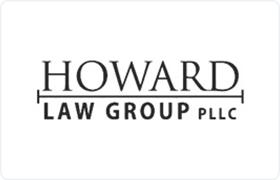Rineyville Credit & Debt Lawyer, Kentucky
Sponsored Law Firm
-
 x
x

Click For More Info:
-
Howard Law Group, P.L.L.C.
213 Saint Clair St Ste 101 Frankfort, KY 40601» view mapBankruptcy & Debt Where Dedication Meets Experience
At Howard Law Group, PLLC, our Frankfort lawyer has devoted his entire practice to helping clients understand their rights and helping clients make empowered legal decisions.
800-716-8131
LaShea Borden
Collection, Consumer Bankruptcy, Credit & Debt, Estate Administration
Status: In Good Standing
Taylor M. Hamilton
Real Estate, Litigation, Credit & Debt, Collection
Status: In Good Standing Licensed: 16 Years
Thomas D. Murphy
Civil Rights, Corporate, Banking & Finance, Credit & Debt, Bankruptcy
Status: In Good Standing Licensed: 38 Years
 Douglas Howard Frankfort, KY
Douglas Howard Frankfort, KY Practice AreasExpertise
Practice AreasExpertise
